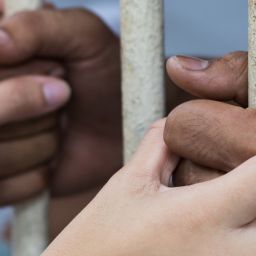Many students in Baltimore are struggling with the impact of addiction, whether it’s their own struggle or something they’re dealing with at home. Others are navigating the precarious landscape of unstable housing, unsure of where they’ll sleep tonight. In this complex environment, teachers are not just educators, but vital lifelines. They possess a unique ability to influence, support, and guide students toward addiction recovery in Baltimore and stable housing. But how exactly can they do this? Let’s explore the multifaceted role of teachers in recovery within the challenging context of housing in Baltimore City.
The Critical Intersection: Addiction, Housing, and Education in Baltimore
The reality is stark: addiction and housing instability are deeply intertwined, particularly in urban environments like Baltimore. The opioid crisis, coupled with economic disparities and a lack of affordable housing, creates a perfect storm. Students impacted by these issues often struggle with attendance, focus, and emotional well-being. They may experience trauma, anxiety, and depression, hindering their ability to learn and thrive. Therefore, to build a truly supportive learning environment, we must first recognize how these challenges intertwine. Can we expect a student to focus on algebra while fearing homelessness? Or how can a student thrive when a parent is battling addiction and the home environment is chaotic? These are the harsh realities faced by many students within the city of Baltimore. Addressing these challenges requires a multifaceted approach, including increased access to addiction recovery in Baltimore and comprehensive addiction treatment in Baltimore, alongside efforts to improve housing stability.
The impact of addiction on students is profound. Children living in homes affected by substance abuse are more likely to experience neglect, abuse, and exposure to violence. They may also develop behavioral problems, struggle with academic performance, and have an increased risk of developing their substance use disorders. The ripple effects of addiction extend beyond the individual, impacting entire families and communities. When we consider the challenges faced by families in securing supportive housing in Baltimore, the weight of these issues becomes even more apparent. Children who lack stable housing often face food insecurity, limited access to healthcare, and frequent school changes, further compounding the challenges they face.
Understanding the Teacher’s Role in Addiction Recovery in Baltimore
The teacher’s role in addiction goes beyond traditional classroom instruction. Teachers are often the first adults to notice changes in a student’s behavior or academic performance. They may observe signs of substance use, such as changes in mood, attendance, or hygiene. They may also become aware of family situations that indicate addiction or housing instability. But what can a teacher do? It starts with awareness and empathy.
Teachers can create a safe and supportive classroom environment where students feel comfortable sharing their experiences. This involves fostering open communication, active listening, and non-judgmental attitudes. It also means recognizing the signs of trauma and understanding how trauma can impact learning and behavior. Teachers can also act as powerful advocates for their students, connecting them with resources and support services within the school and community.
- Teachers can become trained in trauma-informed practices, which help them understand the impact of trauma on students’ brains and behavior. This training can equip them with strategies for creating a safe and supportive classroom environment.
- Teachers can develop strong relationships with students and their families, fostering trust and open communication. This allows them to identify potential issues early and intervene effectively.
- Teachers can collaborate with school counselors, social workers, and other support staff to provide comprehensive support for students impacted by addiction and housing instability.
The Importance of Supportive Housing in Baltimore for Student Success
Stable housing is a fundamental need that impacts every aspect of a child’s life. Without a safe and secure place to live, students are less likely to succeed in school. Supportive housing in Baltimore provides more than just shelter; it offers a foundation for stability, security, and well-being. It can also be the first step in a long journey of addiction recovery in Baltimore.
When students have stable housing, they are more likely to attend school regularly, focus on their studies, and participate in extracurricular activities. They are also less likely to experience stress, anxiety, and depression, which can negatively impact their academic performance. Providing access to stable housing is therefore a critical component of supporting student success.
Furthermore, supportive housing programs often offer wrap-around services, such as case management, counseling, and job training. These services can help families address the underlying issues that contribute to housing instability, such as addiction, mental health challenges, and unemployment. By providing comprehensive support, these programs can help families achieve long-term stability and well-being.
How Teachers Can Identify Students at Risk
Identifying students at risk is a crucial first step in providing support. Teachers are in a unique position to observe changes in students’ behavior, attendance, and academic performance. They may notice signs of substance use, such as changes in mood, hygiene, or social interactions. They may also become aware of family situations that indicate housing instability or addiction.
Here are some key signs that teachers can look for:
- Changes in attendance: Frequent absences, tardiness, or unexplained absences.
- Changes in academic performance: Decline in grades, difficulty concentrating, or lack of motivation.
- Changes in behavior: Irritability, aggression, withdrawal, or changes in social interactions.
- Changes in physical appearance: Poor hygiene, fatigue, or changes in weight.
- Disclosures of family problems: Students may share information about family members’ substance use or housing instability.
By being aware of these signs, teachers can identify students who may be at risk and connect them with appropriate support services. It is crucial to remember that every student is different, and some students may hide their struggles more effectively than others. Therefore, it is essential to build strong relationships with students and create a safe and supportive classroom environment where they feel comfortable sharing their experiences.
Addressing the Specific Needs of Homeless Students
Homeless students face unique challenges that require specific support. This includes:
- Providing Access to Basic Necessities: Provide access to basic necessities, such as food, clothing, and hygiene products.
- Ensuring Transportation: Ensure that students have transportation to and from school.
- Providing Academic Support: Provide academic support to help students stay on track.
- Connecting Students with Housing Resources: Connect students and families with housing resources.
- Advocating for Their Rights: Advocate for the rights of homeless students and ensure they have access to education and other services.
Homeless students are particularly vulnerable and require additional support to succeed. Teachers can play a vital role in ensuring that these students have access to the resources they need.
Connecting Students with Rehab Centers in Baltimore
When a teacher suspects a student or family member is struggling with addiction, connecting them with appropriate resources is crucial. Rehab centers in Baltimore offer a range of services, including detoxification, counseling, and support groups. Teachers can play a vital role in bridging the gap between students and these essential services. Specifically, teachers can help direct students and families towards addiction recovery in Baltimore and addiction treatment in Baltimore, ensuring they have access to the necessary support.
Teachers can work with school counselors and social workers to identify appropriate Baltimore rehabilitation center options. They can also help families navigate the process of accessing treatment, which can be complex and overwhelming. By providing information and support, teachers can help students and families take the first step toward recovery.
It’s important to understand the different types of rehab centers available. Some centers specialize in specific types of addiction, such as opioid addiction or alcohol addiction. Others offer specialized programs for adolescents or young adults. Teachers can help families identify the center that best meets their needs.
Building a Supportive School Community
Supporting students impacted by addiction and housing instability requires a collaborative approach involving teachers, school counselors, social workers, administrators, and community partners. By working together, schools can create a comprehensive support system that addresses the complex needs of these students. This support system should include readily available information and pathways to addiction recovery in Baltimore and addiction treatment in Baltimore, ensuring that students and their families have access to the resources they need.
Schools can establish partnerships with community organizations that provide housing assistance, addiction treatment, and other support services. These partnerships can help connect students and families with resources that are not available within the school. Schools can also create support groups for students and families impacted by addiction and housing instability. These groups can provide a safe space for individuals to share their experiences, learn from each other, and receive support.
The Power of Advocacy: Teachers as Agents of Change
Teachers are powerful advocates for their students. They can use their voices to raise awareness about the challenges faced by students impacted by addiction and housing instability. They can also advocate for policies and programs that support these students.
Teachers can work with local and state policymakers to advocate for increased funding for housing assistance, addiction treatment, and school-based support services. They can also advocate for policies that promote affordable housing and address the root causes of addiction. By using their voices, teachers can help create a more just and equitable society for all students.
Creating Trauma-Informed Classrooms
Many students impacted by addiction and housing instability have experienced trauma. Trauma-informed classrooms are designed to create a safe and supportive environment where students feel secure and supported. Teachers can use a variety of strategies to create trauma-informed classrooms, such as:
- Building strong relationships with students.
- Creating a predictable and consistent classroom environment.
- Teaching students coping skills and emotional regulation strategies.
- Providing opportunities for students to build resilience.
- Using positive behavioral interventions and supports.
By creating trauma-informed classrooms, teachers can help students heal from trauma and build the resilience they need to succeed in school and in life.
The Role of Mentorship: Providing Guidance and Support
Mentorship can play a crucial role in supporting students impacted by addiction and housing instability. Mentors can provide guidance, support, and encouragement, helping students navigate the challenges they face. Teachers can act as mentors or connect students with community-based mentoring programs.
Mentors can help students develop positive relationships, build self-esteem, and set goals for the future. They can also provide support and guidance during difficult times. By providing mentorship, teachers and community members can help students build the resilience they need to overcome adversity.
Creating a Culture of Understanding
Addiction and housing instability are often stigmatized, which can prevent students from seeking help. Teachers can play a vital role in addressing the stigma and creating a culture of understanding. This involves educating students and the school community about addiction and housing instability, challenging negative stereotypes, and promoting awareness of available resources like addiction recovery in Baltimore and addiction treatment in Baltimore. By fostering an open and supportive environment, teachers can encourage students and families to seek the help they need.
Teachers can create opportunities for students to learn about addiction and housing instability through classroom discussions, guest speakers, and community service projects. They can also promote empathy and understanding by sharing stories of resilience and recovery. By addressing the stigma, teachers can help create a more supportive and inclusive school community.
The Future of Support: Building a More Equitable Baltimore
The challenges faced by students impacted by addiction and housing instability are complex and multifaceted. We must collaborate comprehensively to address these challenges. By working together, schools, community organizations, and policymakers can create a more equitable Baltimore where all students have the opportunity to thrive.
This involves investing in affordable housing, addiction treatment, and school-based support services. We must also dismantle the root causes of poverty and inequality. Collaborative action is the key to forging a brighter future for all students. The work that teachers do in supporting students and families dealing with these issues is vital. The impact of a caring teacher can last a lifetime, and change the trajectory of many lives.
Seeking Professional Help?
Are you or a loved one in Baltimore struggling with addiction and in need of treatment or supportive housing? Are you a teacher or student seeking guidance on health-related challenges? Contact us today for professional assistance.
Conclusion
Teachers are on the front lines, witnessing the daily struggles of students impacted by addiction and housing instability. Their role extends far beyond traditional teaching; they are lifelines, advocates, and beacons of hope. By understanding the complexities of these issues, building strong relationships with students, and connecting them with vital resources like rehab centers in Baltimore, teachers can make a profound difference. The need for supportive housing in Baltimore is clear, and the teacher’s role in addiction recovery and housing stability is indispensable. We must recognize the dedication of these educators and support them in their efforts to create a more just and equitable future for all students in Baltimore City. It is a collective responsibility to foster a community where every child has the opportunity to thrive, regardless of their circumstances. By taking action, we can ensure that every student has the chance to reach their full potential.





